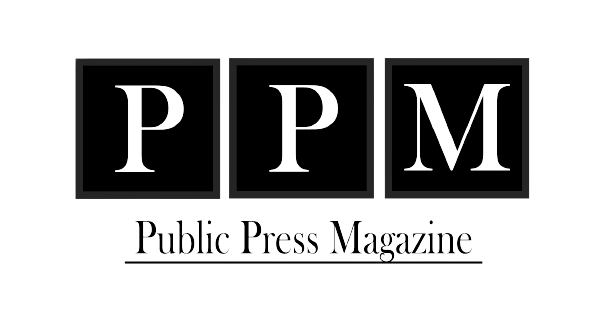Table of Contents
In today’s fast-paced digital age, businesses of all sizes are turning to SaaS tools to stay competitive, save time, and scale efficiently. SaaS, or Software as a Service, has transformed how we use technology by offering cloud-based solutions that are flexible, affordable, and easy to access.
From project management and customer service to HR and marketing, SaaS platforms now touch every corner of the business world. In this article, we’ll explore what SaaS tools are, how they help businesses, and some of the best SaaS tools available today.
What Are SaaS Tools?

SaaS tools are cloud-based applications that businesses subscribe to on a monthly or annual basis. Instead of installing software on individual devices, users can access these tools through a browser, often with just a login.
This model brings several advantages:
- Accessibility from any device with internet access
- Scalability that grows with your business
- Automatic updates and security patches
- Lower upfront costs, no need for heavy infrastructure
These benefits make SaaS ideal for startups, small businesses, and large enterprises alike. Whether you’re running a remote team or managing a brick-and-mortar store, SaaS solutions can optimize your workflow and help you achieve more.
Benefits of Using SaaS Tools
Businesses are adopting SaaS tools faster than ever because of the tangible value they bring:
Improved Productivity
Tools like Notion, Trello, and Asana streamline team communication and task management, keeping everyone on the same page.
Cost Efficiency
Unlike traditional software that demands high licensing fees, SaaS tools offer affordable subscription models, often with free tiers for small teams.
Real-Time Collaboration
Remote teams thrive on SaaS platforms like Slack, Zoom, and Google Workspace that offer instant communication and document sharing.
Data-Driven Insights
Analytics tools like Tableau, Looker, and Google Analytics give businesses the ability to make smarter decisions based on real-time data.
Automation and Scaling
From email marketing to finance, SaaS tools automate repetitive tasks, allowing businesses to focus on growth and innovation.
Retik Finance: Powering the Future of Decentralized Finance in 2025
Top SaaS Tools in 2025 You Shouldn’t Ignore

Let’s dive into some of the best SaaS tools across different categories that are making waves this year.
CRM and Sales – HubSpot & Salesforce
Managing customer relationships is crucial. HubSpot offers a free CRM with paid upgrades for sales automation, lead tracking, and email campaigns. Salesforce, the enterprise giant, provides deep customization and integration options for larger teams.
Project Management – Asana, Trello & ClickUp
These tools help teams stay organized, track progress, and meet deadlines. Asana offers powerful workflow automation, Trello is great for visual thinkers, and ClickUp brings it all together with a highly customizable interface.
Communication – Slack & Zoom
Slack has become the go-to for workplace messaging, integrating with hundreds of other SaaS apps. Zoom, now more powerful with AI features, remains a staple for video conferencing and webinars.
Marketing – Mailchimp & Semrush
Mailchimp simplifies email campaigns and automation, while Semrush helps with SEO, keyword tracking, and content strategy.
HR and Payroll – Gusto & BambooHR
Hiring, onboarding, and managing employees is smoother with Gusto and BambooHR, offering everything from benefits management to time tracking.
Finance – QuickBooks & FreshBooks
QuickBooks is ideal for accounting, invoicing, and tracking expenses. FreshBooks focuses more on freelancers and small teams with beautiful invoicing features.
Design and Creative – Canva & Figma
For graphic design and collaboration, Canva offers templates and AI tools to create visuals with ease, while Figma is perfect for UI/UX design with real-time editing.
How to Choose the Right SaaS Tool

Choosing the best SaaS tools for your business depends on a few key factors:
- Business Size: Startups may benefit from all-in-one platforms, while larger teams may prefer specialized tools.
- Budget: Many tools offer tiered pricing. Start with the free version and upgrade as needed.
- Ease of Use: A tool should simplify your workflow, not complicate it.
- Integration: Look for SaaS tools that integrate with your existing tech stack like Google Workspace, Slack, or Zapier.
- Customer Support: Make sure help is available when you need it, live chat, email, or documentation.
Future Trends in SaaS (2025 and Beyond)
The SaaS landscape is evolving quickly. Here are some trends to watch:
- AI-Powered Tools: From content creation to support bots, AI is supercharging SaaS functionality.
- Vertical SaaS: Industry-specific SaaS tools (for legal, healthcare, real estate) are growing fast.
- Low-Code/No-Code Platforms: Tools like Airtable, Bubble, and Webflow are empowering users to build apps without coding skills.
- Data Privacy and Compliance: With stricter regulations, SaaS companies are focusing more on security and GDPR compliance.
- Subscription Fatigue: Many companies are consolidating their SaaS stack to avoid overlapping subscriptions and optimize spending.
Final Thoughts
Whether you’re a solopreneur or leading a global enterprise, SaaS tools offer the flexibility, innovation, and power needed to succeed in today’s competitive landscape. From improving team communication to managing complex operations, there’s a cloud-based solution for nearly every business need.
As SaaS continues to grow, staying updated with the latest tools and trends will give your business a competitive edge. Don’t just use software—use smart SaaS tools that scale with you, adapt to your workflow, and help you focus on what matters most: growth, innovation, and customer success.



